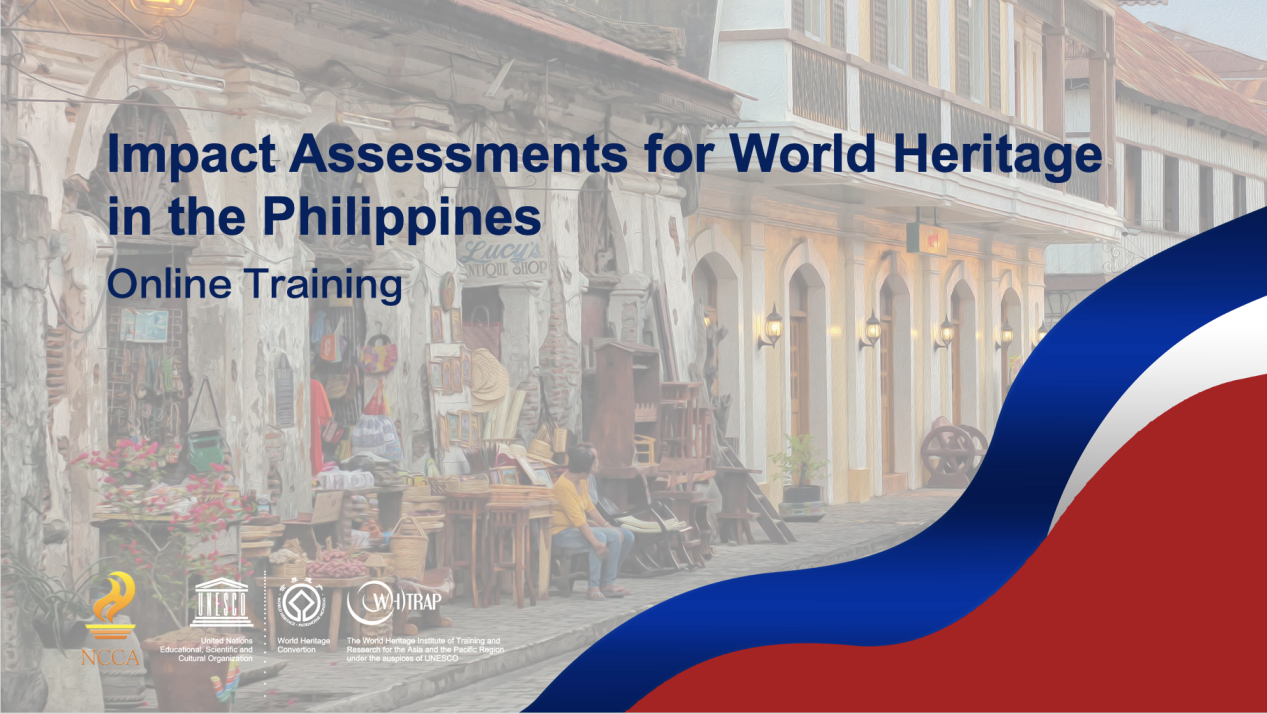
SUMMARY
The Philippine National Commission for Culture and the ArtsThe Philippine National Commission for Culture and the Arts (NCCA), through its Cultural Properties Protection and Regulation Division (CPPRD), in partnership with World Heritage Institute of Training and Research in Asia and the Pacific Region, Shanghai (WHITRAP Shanghai) recently conducted the Training on Impact Assessments for World Heritage in the Philippines from 26 May, 2 June, 16 June, to 22 June 2022, which was facilitated through hybrid means; composing of three (3) online lectures and an in situ workshop.
This training is in line with the CPPRD’s functions, as provided by the transfer of regulatory functions from the National Museum of the Philippines (Republic Act No. 11333) and the continuous implementation of relevant provisions of the National Cultural Heritage Act (Republic Act No. 10066). This undertaking sought to enhance the competence of professionals and other agents involved in the conservation and management of cultural heritage sites in the Philippines. This set of activities focused on key management aspects for World Heritage and on Impact Assessments, with the following aims:
- Promote a better understanding of statutory processes and requirements of the World Heritage Convention, with particular emphasis on management, monitoring, and reporting mechanisms for inscribed properties; and
- Provide skills and knowledge to the participants in relation to the design and implementation of Impact Assessments for World Heritage properties.
With this in mind, Heritage Impact Assessments emerged as the worldwide tool to protect heritage sites from the consequences of development and/or changes that have the possibility to alter their set of attributes which contribute to the values of such sites, particularly the Outstanding Universal Value (OUV) of inscribed World Heritage properties. Likewise, such assessments are undertaken to determine the potential impacts of a proposed development or site alteration on a heritage resource and to recommend mitigation and conservation measures.
In general, the training has the following highlights: values-based management, the methodology for impact assessment for World Heritage, and the practice of impact assessments in the context of sustainable development. As such, the OUV is the basis for the protection and management of World Heritage sites, while other significant values should not be ignored. The heritage management was not only concerned with conservation and preservation of these pertinent properties but also with social, economic, and environmental development; making heritage conservation and management goals aligned with sustainable development goals. Thus, Heritage Impact Assessment is one of the tools that help achieve those goals.
Consequently, the training articulated this: while the Philippine Republic Act No. 10066 stipulates that any government or nongovernment infrastructure project or architectural site development shall include anthropological, archaeological, historical, and heritage site conservation concerns in the Philippine Environmental Impact Assessment System, the methods that were deployed to explicate these concerns for specific environmentally critical areas and/or projects may not always meet World Heritage standards and be as inclusive as they could be.
The training affirmed the importance of defining the values and attributes that form part of the baseline data for heritage properties, whereby values-based approach is the core principle to effective World Heritage management; such that, these values are identified by people and are fundamental to all the processes of heritage management. The training took great consideration of factors from the 'wider setting' of heritage properties, which meant going beyond the 'buffer zone' and ultimately rethinking the usage of the terminology of 'core zone' in the heritage management practice. The training also gave premium on people-centered approaches in heritage management as a way to achieve authentic stakeholder participation, wherein processes and policies should be more open and inclusive to various stakeholders, including rights-holders and the relevant local community; leading to a more democratic participatory approach to stakeholder engagement in various levels of decision-making.
The training participants came from various segments of the cultural heritage and tourism sectors as well as local and national government offices, including: representatives of the NCCA, National Museum of the Philippines, National Historical Commission of the Philippines, Department of Public Works and Highways, Department of Environment and Natural Resources, Intramuros Administration, ICOMOS Philippines, the National Committee on Monuments and Sites, UNESCO National Commission of the Philippines, Tourism Infrastructure and Enterprise Zone Authority, University of the Philippines Archaeological Studies Program, Ifugao State University, Griffith University of Australia; representatives from inscribed sites in the World Heritage list, such as the Baroque Churches of the Philippines, Rice Terraces of the Philippine Cordilleras, and Historic City of Vigan; and also representatives from the World Heritage Tentative List (both cultural and mixed properties) across the Philippine archipelago.
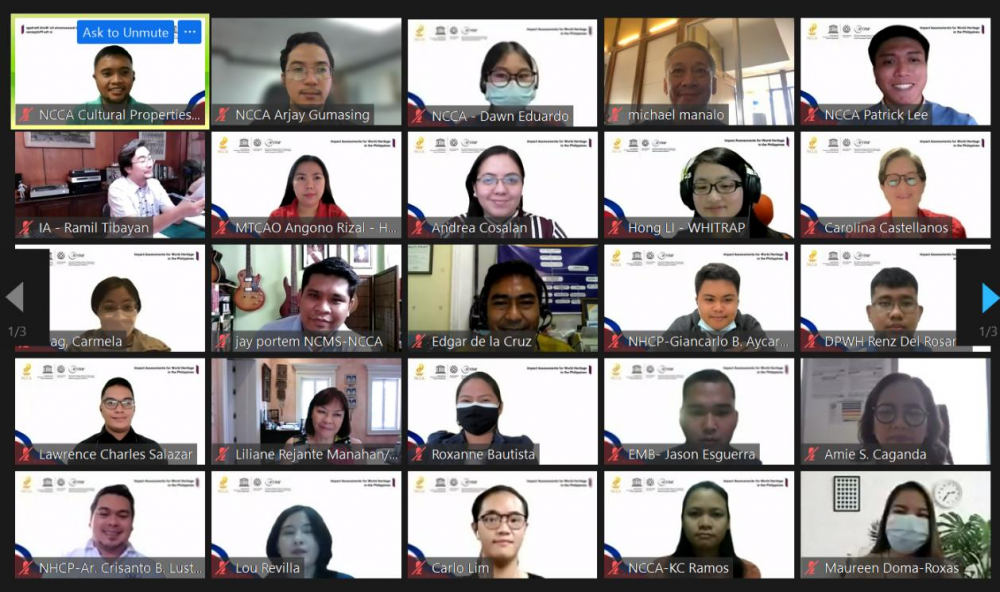
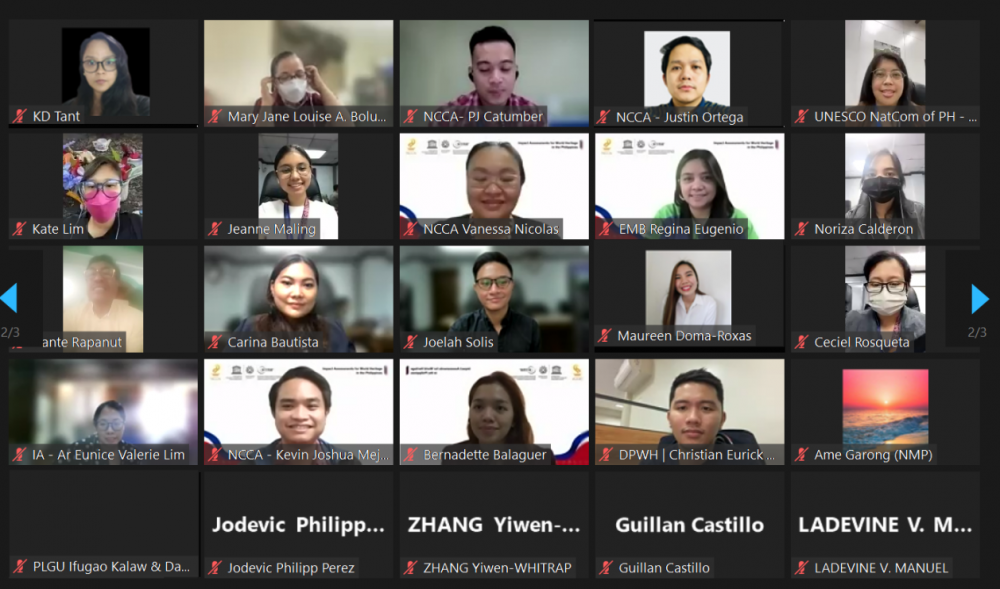
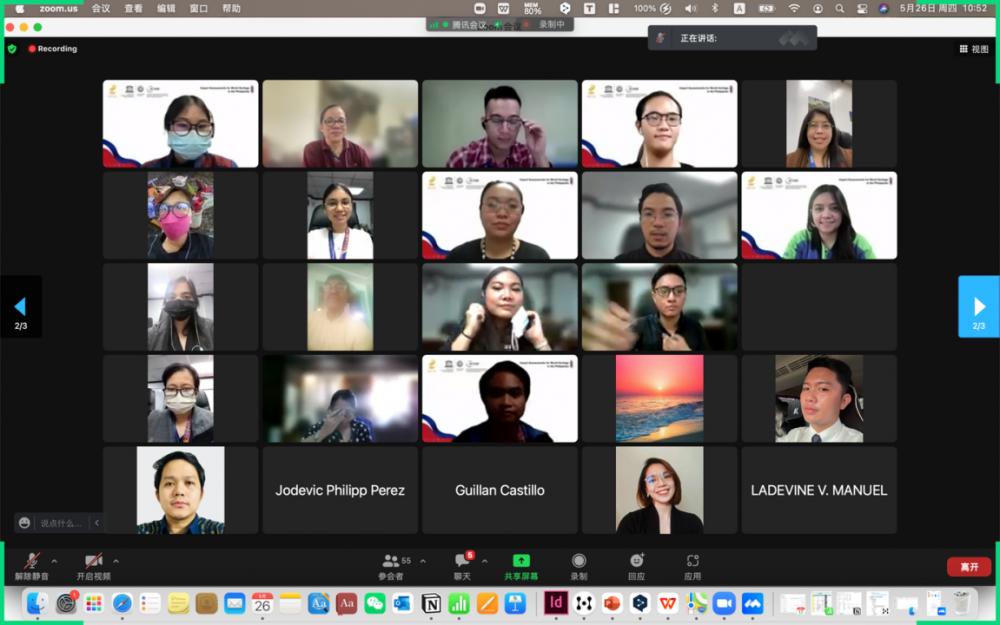
Group photos
The resource persons from WHITRAP Shanghai include Mr. Jian Zhou (Secretary-General of WHITRAP and Director and WHITRAP Shanghai), Ms. Carolina Castellanos (a Senior Consultant of WHITRAP Shanghai hailing from Mexico), Ms. Hong Li (Programme Specialist of WHITRAP Shanghai), Mr. Jun Zheng (Professor at the Chinese Academy of Cultural Heritage), and Architect Carmela Biag of the United Architects of the Philippines.
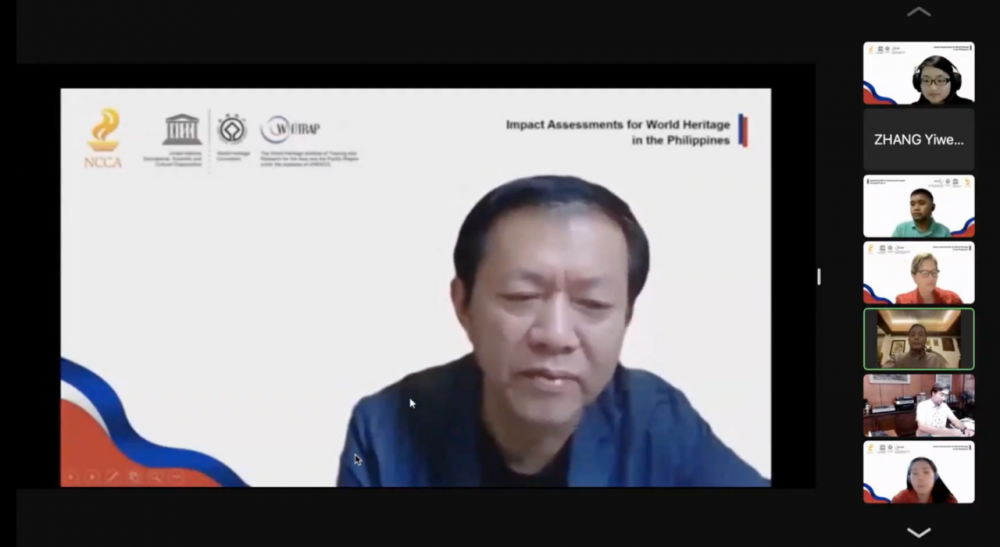
Photo of Mr. ZHOU Jian speaking
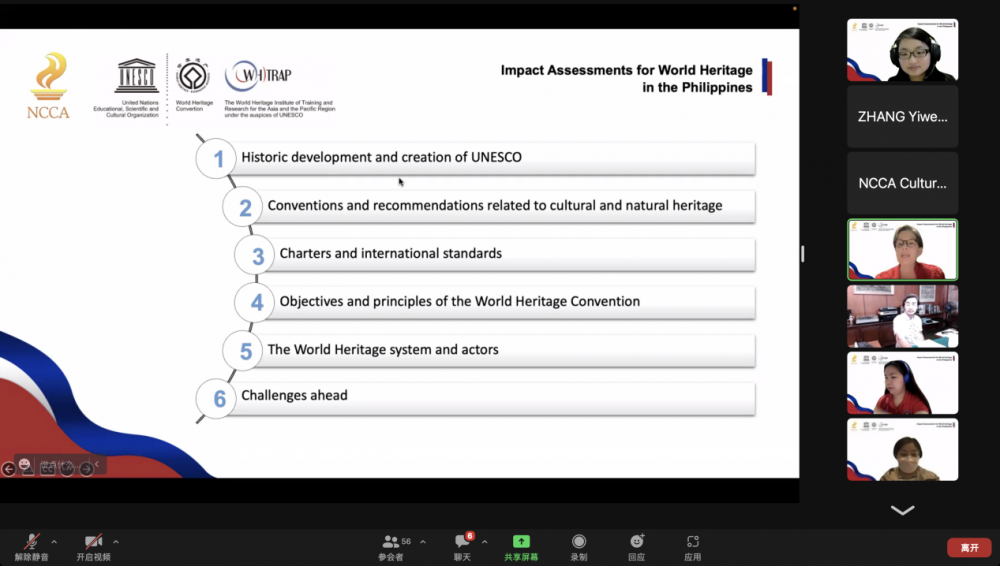
Photo of Ms. Carolina Castellanos speaking
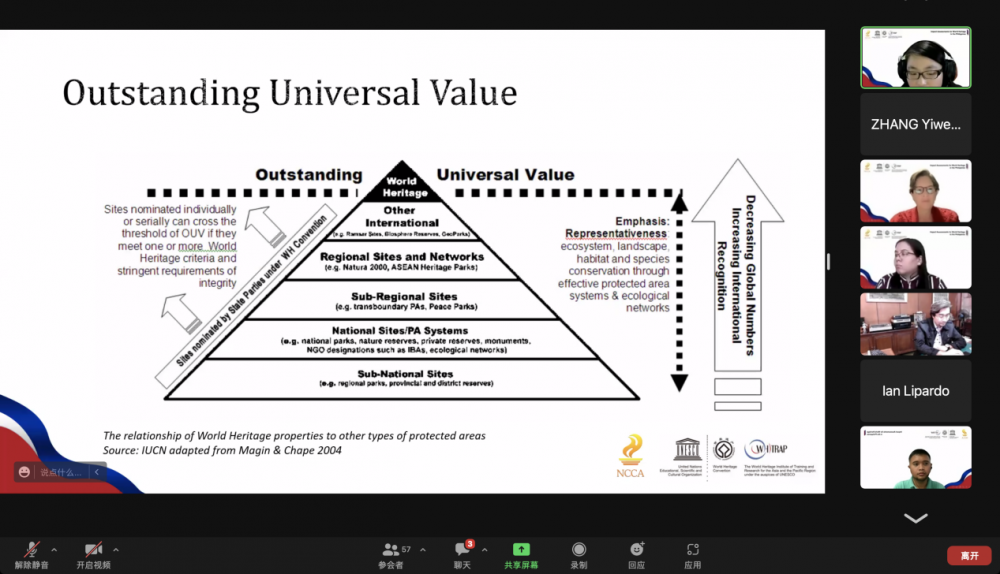
Photo of Ms. Li Hong speaking
As a culminating activity, an executive workshop was held last 22 June 2022 at the NCCA Board Room (Hudhud), which gathered various representatives from relevant national agencies and offices, to deal with the localized commissioning of Impact Assessments in the country, in view of the serially-inscribed Baroque Churches of the Philippines World Heritage site’s experience with the construction of the Binondo-Intramuros Bridge; making the site, particularly the directly impacted property which is the San Agustin Church located in Intramuros, Manila, as a case study.
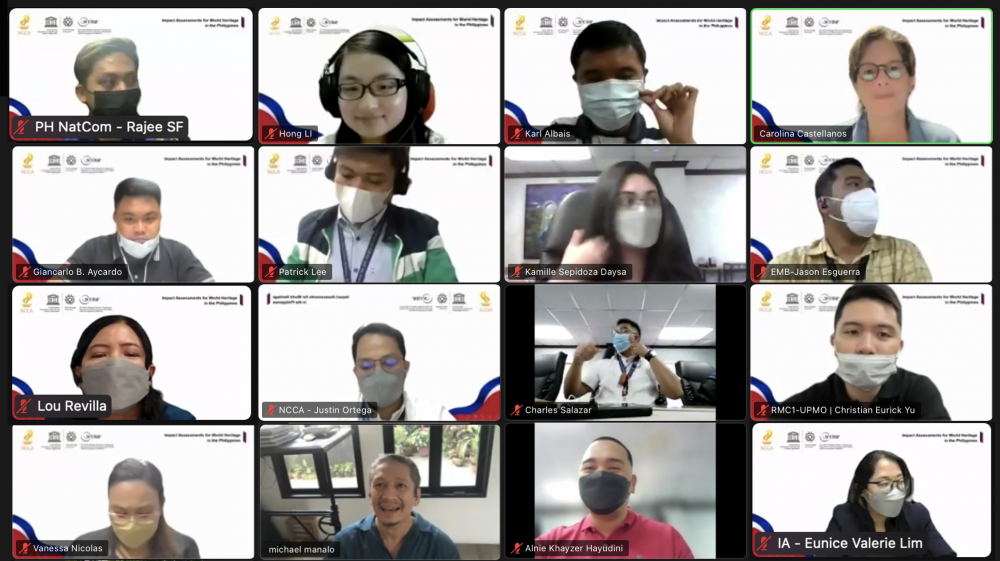
Workshop photos
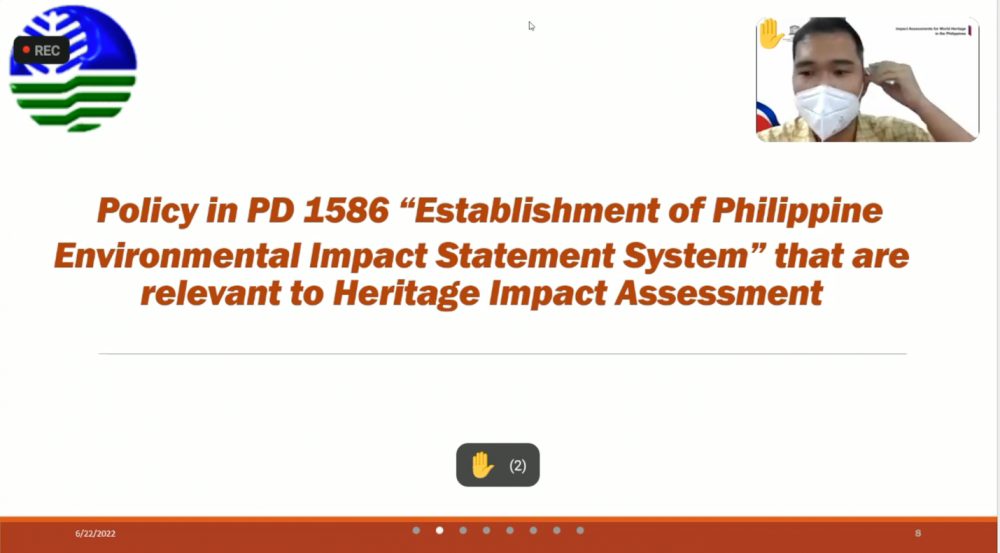
Speak by local people
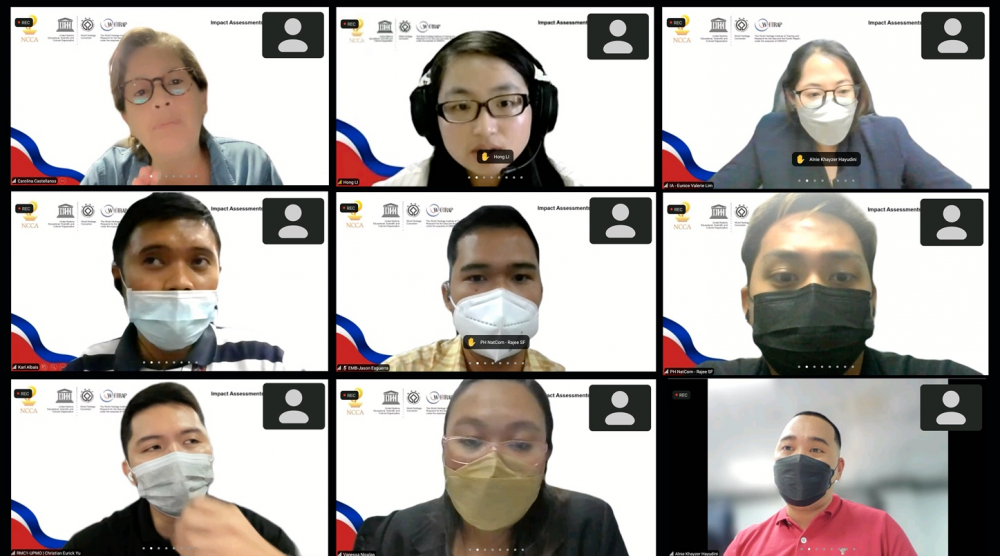
Ultimately, this training aimed to spur and initialize sustained discussions towards the institutionalization of the National Framework regulating and implementing Heritage Impact Assessments (HIAs) as well as the harmonization of the HIAs with other existing impact assessment typologies such as Archaeological Impact Assessments and Environmental Impact Assessments, based on the tenets established by the international community in consonance with the laws of the Philippines.
EVALUATION
LI Hong, ZHANG Yiwen, WHITRAP Shanghai
In order to improve the quality of its capacity-building activities, WHITRAP and NCCA get feedback from the participants. The evaluation notably concerns the following aspects: general organization of the course, course content, technical implementation, recommendations and course follow-up. Each aspect is assessed through grading (the highest score is 5) and comments. Below is summarized the outcome of the evaluation form of the activity of "Impact Assessments for World Heritage in the Philippines" in 2022.
General Organization: Participants are satisfied with the overall organization of the course; all the items get the score above 4. While participants are expected to more case studies on Southeast Asian World Heritage Sites.
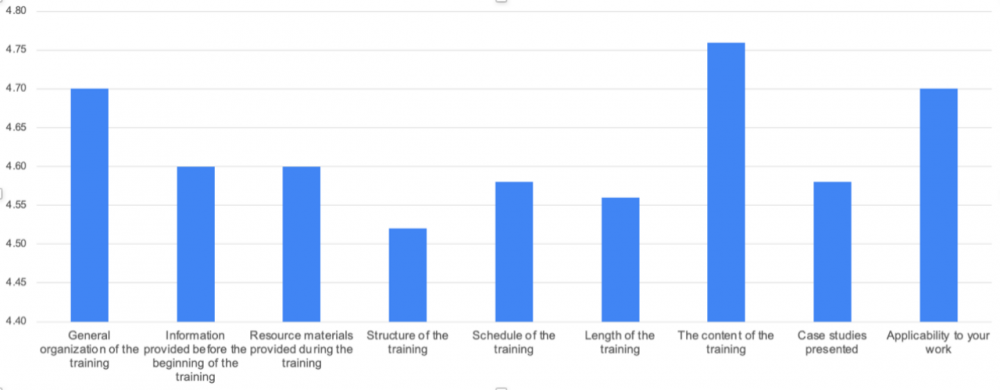
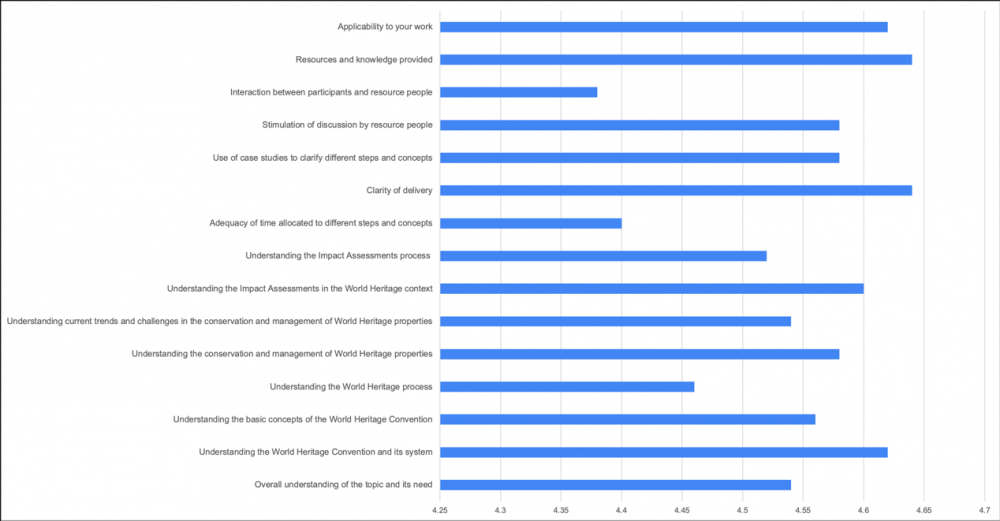
Course Content: the courses fully demonstrate the process and methods of World Heritage Impact Assessment through the updated Guidance and three tools. Notably, participants are well equipped to identify the values and attributes of heritages from existing materials and classify them for subsequent impact assessment. But at the same time, participants suggest to have more open time to discussion regarding local challenges, especially in the Philippines settings.
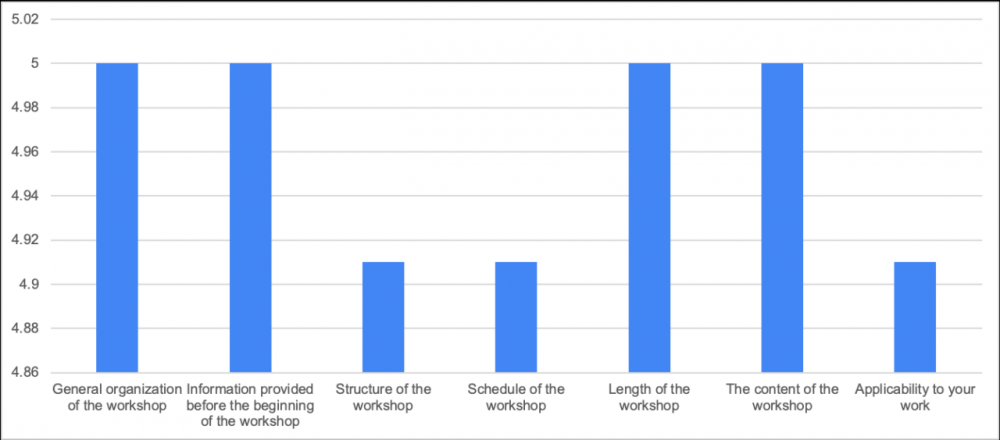
Fig 7. Evaluation of the Course Content
Technical Implementation: due to the pandemic, a package of online software is prepared for presentations and communications, and these software function well for all participants during the training. Although a small number of our participants occasionally encounter network issues, the whole training runs favorably and efficiently with the help of the online software.
Recommendations: participants are satisfied that the resource persons present impact assessment process and related issues in a way that is clear and intelligible. Some of the participants suggest to improve the realistic applicability for the Philippine context, especially for the actual state of empowerment of stakeholders, realistic organizational and so on. Local stakeholders and practitioners of impact assessments in the Philippines could share their own challenges as well as their best practices with resource speakers guiding the discussion or offering advice whenever applicable.
Course Follow-up: almost all participants would like to share the course materials to their supervisors and colleagues. They would like to stay updated on the courses and activities related to HIA as well as management and monitoring of World Heritage properties. A number of participants share with us the projects they are working on, and they believe that what they learned in the course can be applied to their work and be helpful in the future practices.
